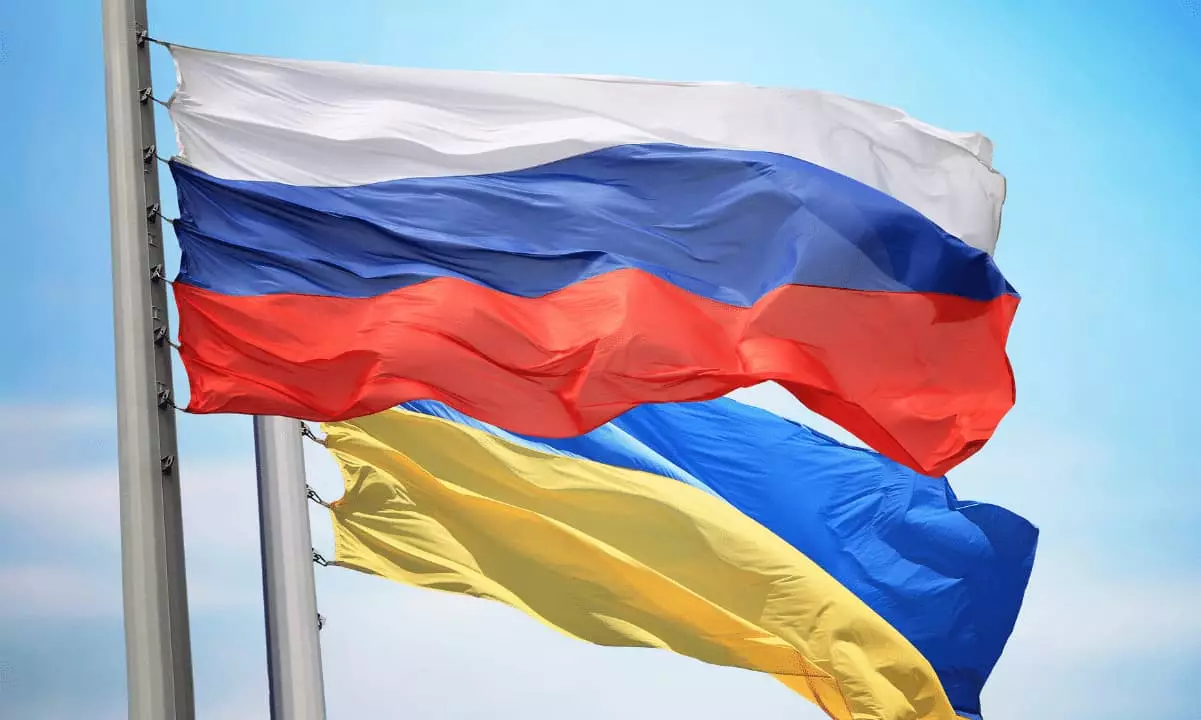The recent surge in cryptocurrency adoption in Eastern Europe, particularly in Ukraine and Russia, highlights a unique and often overlooked aspect of economic resilience in the face of adversity. According to Chainalysis, these two countries have climbed the ranks of the Global Crypto Adoption Index, reflecting their pivotal roles in the global digital asset economy. With Ukraine moving through a harsh conflict and Russia grappling with international sanctions, the growth of digital currencies has served not only as a tool for financial transactions but also as a means of economic navigation through turbulent waters.
Interestingly, Russia’s leap up six spots in the Crypto Adoption Index illustrates a broader trend whereby individuals are increasingly turning to decentralized finance (DeFi) solutions as traditional banking systems come under pressure. The report indicates a staggering $182.44 billion in crypto inflows into Russia, while Ukraine recorded inflows of $106.1 billion. This shift underscores the resilience of local economies that are adapting to a digital-first approach when conventional financial avenues are closed or unreliable.
Furthermore, the report reveals that decentralized exchanges (DEXes) are at the forefront of this growth. Ukraine’s DEX inflows surged by 160%, while Russia’s exceeded 173%, showcasing a regional shift toward decentralized platforms that offer greater flexibility and security features. In an environment where centralized institutions are viewed with skepticism, these DEX platforms provide crucial lifelines for both individual investors and institutional players.
A closer examination of transaction sizes reveals significant insights into the evolving cryptocurrency market in these regions. Ukraine alone has experienced a phenomenal 361.49% increase in large transactions over $10 million, suggesting a shift toward institutional investment that could influence market dynamics profoundly. This trend suggests that institutional players are becoming increasingly confident about the digital asset space as they seek refuge from local economic instability.
Moreover, while large institutional transactions are on the rise, small retail transactions have also soared, particularly in Ukraine, where they grew by nearly 82.29%. This grassroots adoption is crucial as it not only reflects a societal shift toward digital currencies but also serves as a coping mechanism for citizens facing inflation and economic hardship. Residents are increasingly relying on cryptos for day-to-day expenditures as they struggle to navigate local financial constraints.
Moreover, the rise of no-KYC (Know Your Customer) cryptocurrency exchanges has been a game changer in Russia. These platforms have become increasingly popular as residents seek alternatives to traditional banking systems, especially following harsh sanctions affecting major financial institutions. Although traffic to centralized exchanges remains stable, the influx into no-KYC exchanges suggests a pronounced shift toward privacy-centric trading solutions.
This evolution presents both opportunities and challenges for regulators and market participants alike. As more citizens gain access to cryptocurrencies, the potential for illicit activities cannot be ignored, leading to calls for enhanced governance and regulatory frameworks.
The rise of cryptocurrency in Ukraine and Russia serves as a testament to the adaptability of financial systems in crisis. As traditional structures undergo immense pressure, digital currencies provide both a viable alternative and an opportunity for economic resilience. The ongoing developments within the DeFi space and the increasing prevalence of no-KYC platforms will continue to shape the future of the crypto economy in these regions. As they navigate their unique challenges, Ukraine and Russia stand poised to redefine what it means to engage in the global digital economy.


Leave a Reply